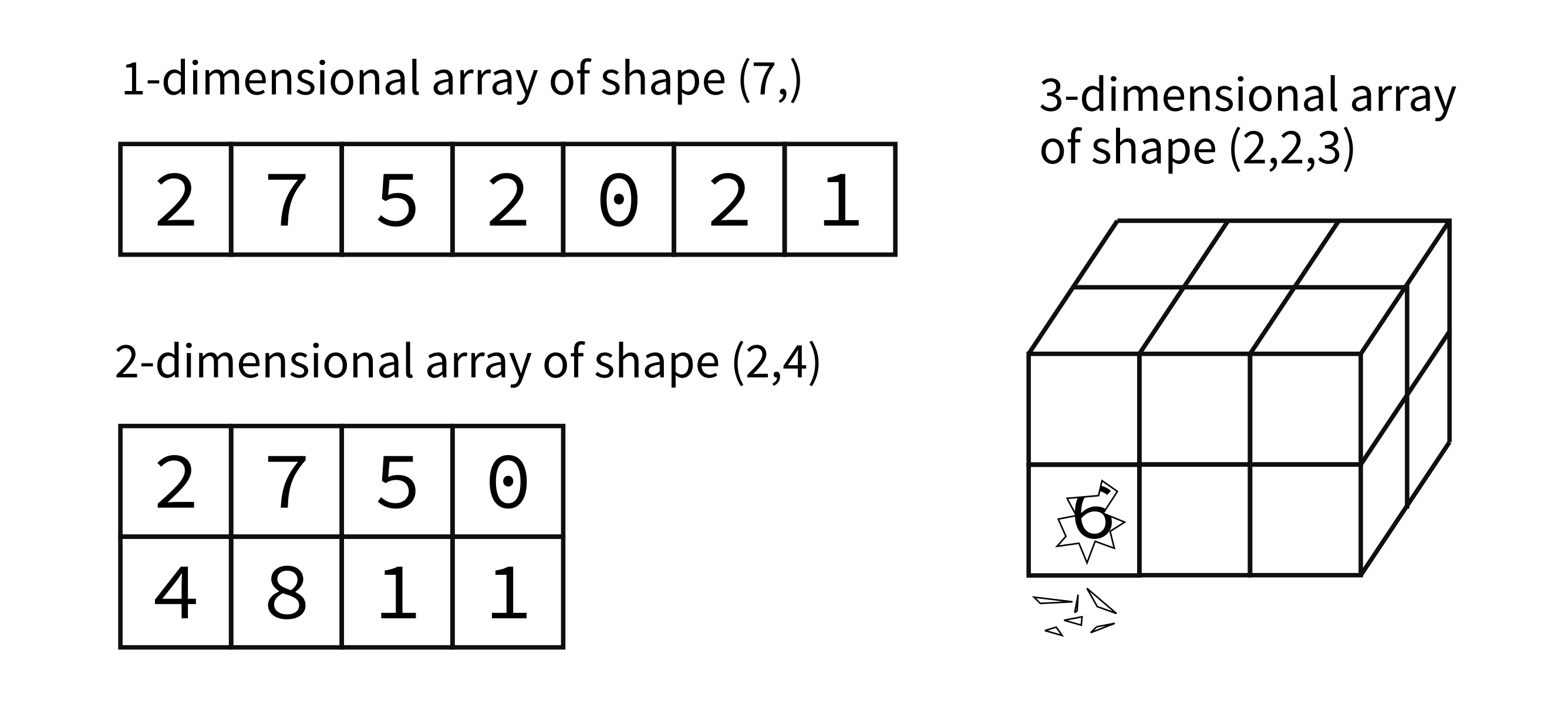Lecture 22
Numpy
MCS 275 Spring 2023
Emily Dumas
Lecture 22: Numpy
Reminders and announcements:
- Project 3 available; due 6pm on Fri Mar 17.
- Install Pillow now (if possible) to make lab this week smoother.
- I will be out of work on Fri Mar 10, and will post an asynchronous lecture video in place of our usual meeting that day.
A good book
For numpy, matplotlib, and a few other topics from MCS 275, I strongly recommend reading:
It is available for free online. Chapter 2 is about numpy.
Installing numpy
In most cases, pip is all you need:
python3 -m pip install numpyOther methods are described in the Numpy docs.
Test:
>>> import numpy
>>> numpy.__version__
'1.17.4'
Import as
You can give a module a new name at import time, e.g.
import math as sun
sun.tan(0.5)
Since numpy has a lot of global names, most people import it under a shorter name to save typing:
import numpy as np
numpy purpose
- Fast, type-homogeneous, multidimensional arrays
- e.g. vector, matrix, tensor, ...
- Large library of mathematical functions and algorithms (especially linear algebra)
Numpy is one of the most-used Python packages in scientific computing (computational math, data science, machine learning, ...).
arrays

Implemented in `np.ndarray` class, usually made with `np.array`.
Without numpy:
v = [2,3]
w = [3,-2]
v + w # [2,3,3,-2]
3*v # [2,3,2,3,2,3]
v.dot(w) # fail!
A = [ [2,1], [1,1] ]
type(A) # list
A*v # fail!
With numpy:
v = np.array([2,3])
w = np.array([3,-2])
v + w # [5,1]
3*v # [6,9]
v.dot(w) # 0
A = np.array([ [2,1], [1,1] ])
A*v # possibly confusing answer
A.dot(v) # [7,5] (matrix-vector mult)
Notebook time
I'll build a Python notebook demonstrating some basic features of numpy.
After lecture it will be in the course sample code repo.
Indexing and slicing
Numpy has powerful syntax for retrieving individual elements or collections of elements of arrays.
Most basic version: A[i,j] gives the element at row i, column
j for a 2D array. Similar in higher dimensions, e.g. A[i,j,k,l].
Slices return views of part of the array, not copies.
Ufuncs
Numpy's "ufuncs" or universal functions are functions that can be applied directly to arrays, automatically acting on each element.
Numpy provides a lot of these.
Usually, ufuncs allow you to avoid explicit iteration over array elements (which is much slower).
Bool gotcha
np.array([5,0,1])==np.array([0,0,0])evaluates to
np.array([False,True,False])and numpy arrays do not support boolean coercion so this cannot appear in if.
To test if two arrays are equal, use one of:
np.all(A==B)
np.array_equal(A,B)Aggregations
Numpy has operations like sum, product, max, min, all, any, that reduce array dimension.
References
- Python Data Science
Handbook by Jake VanderPlas
- Bookmark it now! We'll use it for several topics.
- Chapter 2 contains the introduction to numpy.
- There is also a print edition from O'Reilly.
Revision history
- 2022-03-09 Last year's lecture on this topic finalized
- 2023-03-05 Updated for 2023